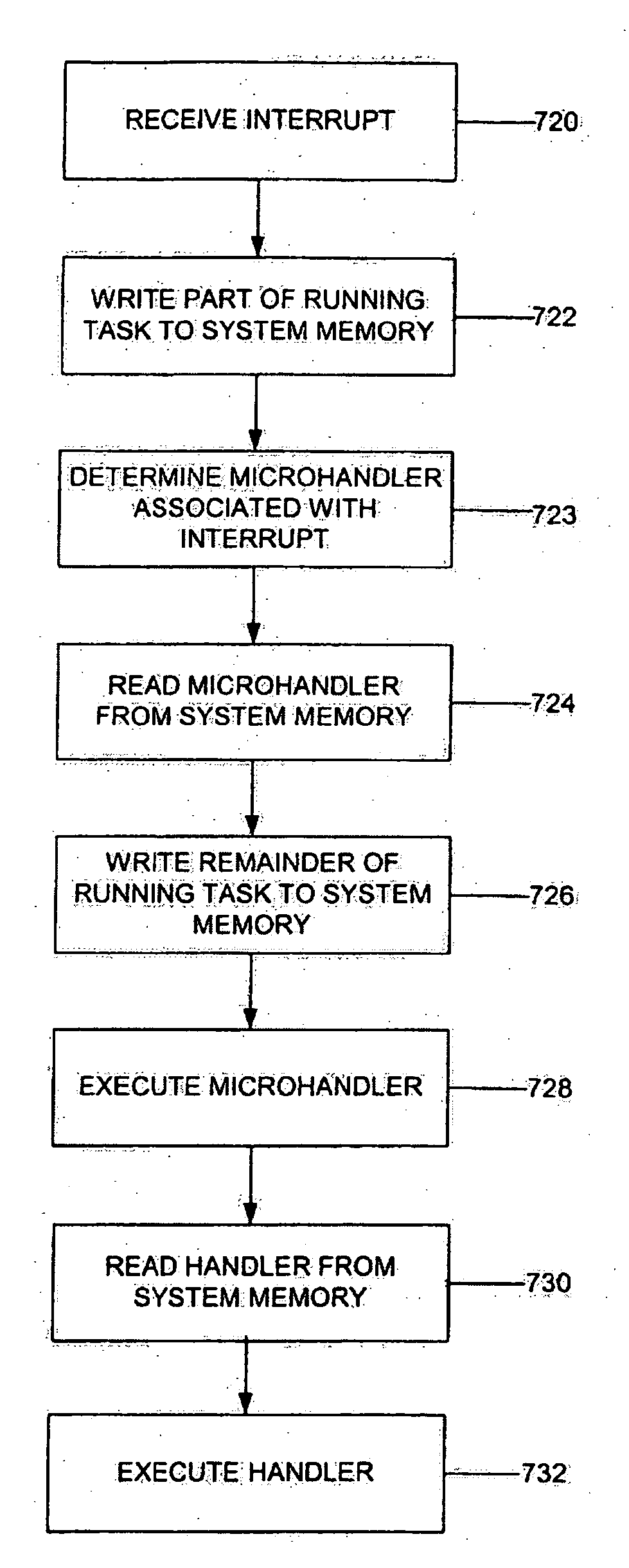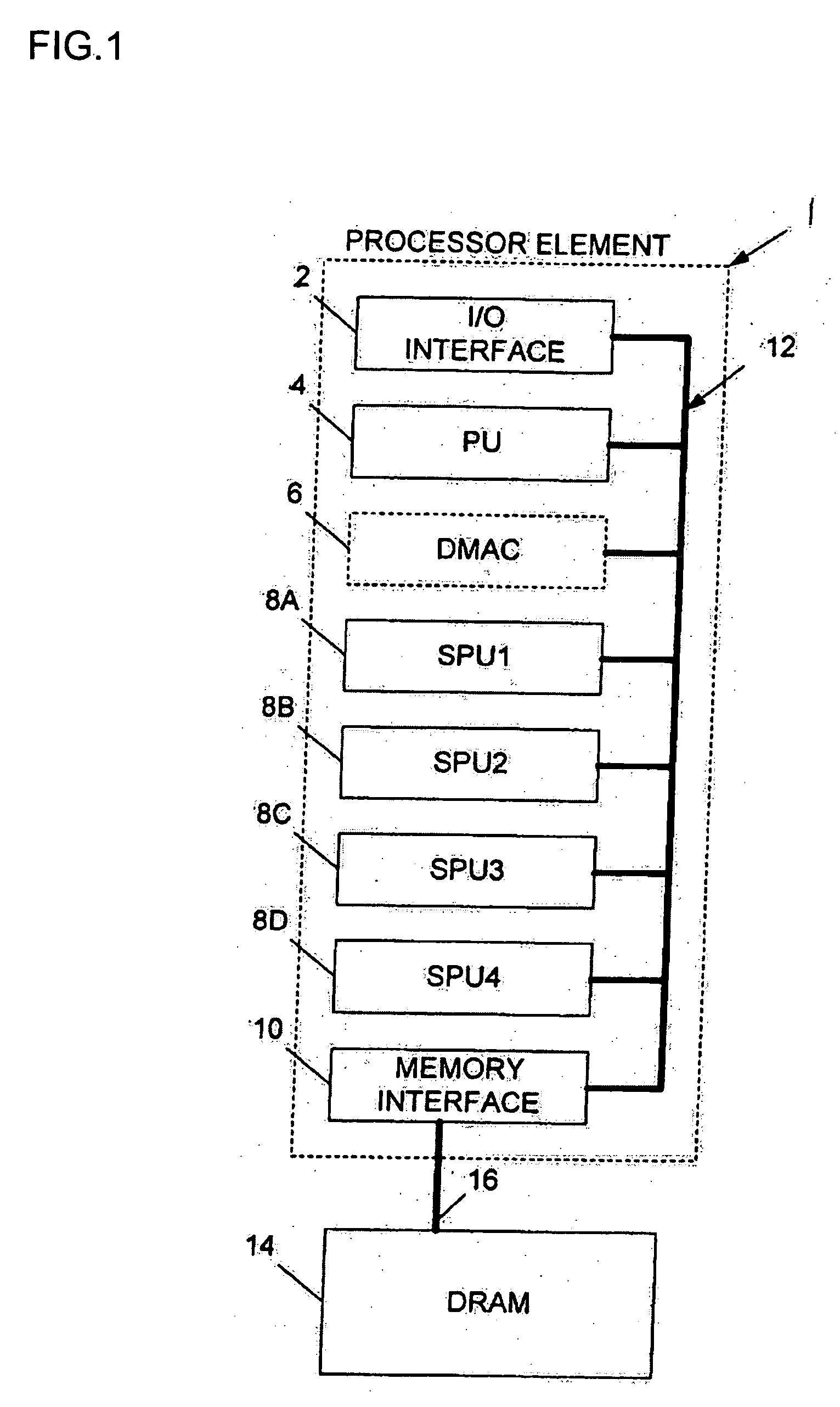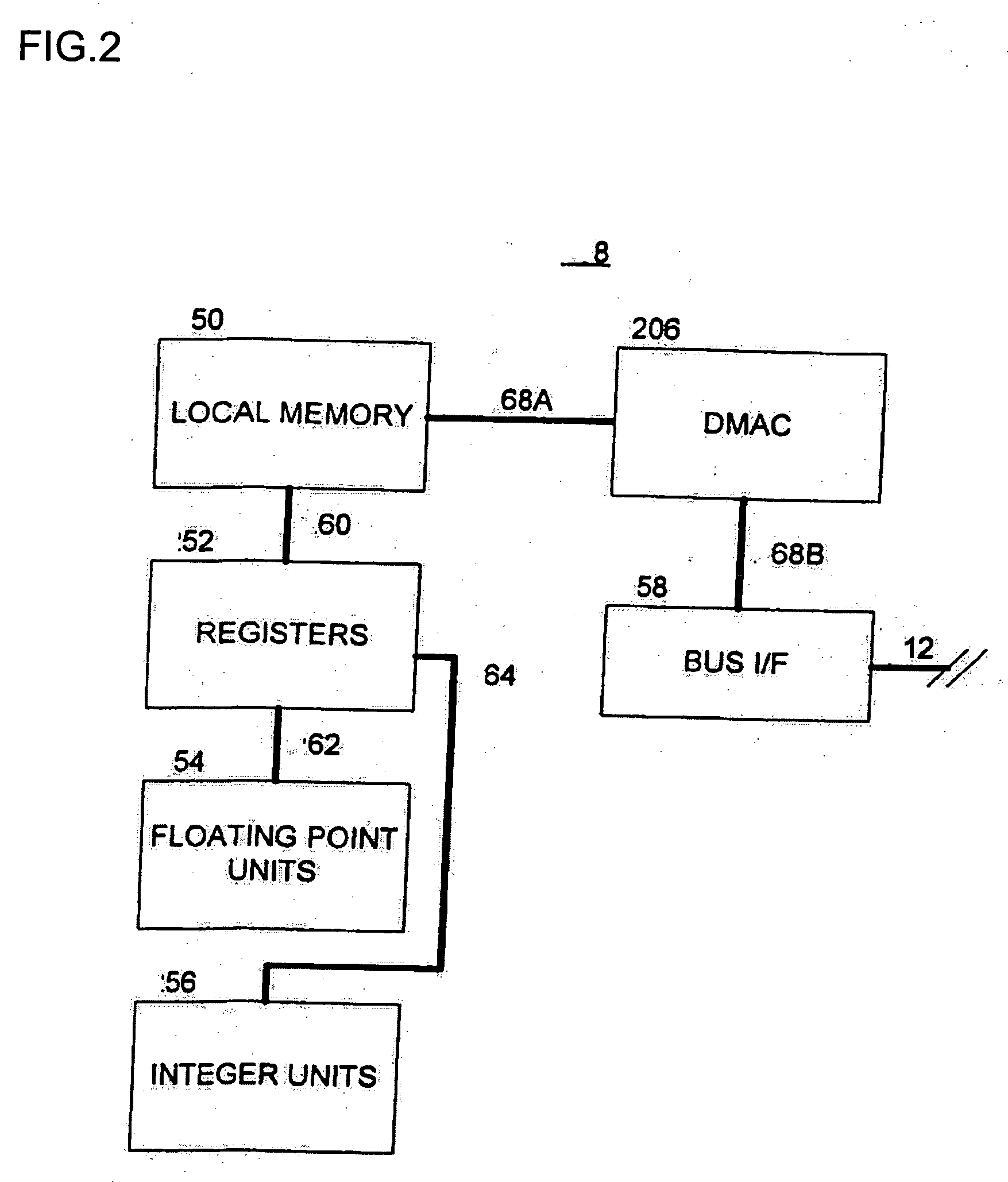Micro interrupt handler
a micro-interrupt and handler technology, applied in the field of processor-based systems, can solve the problems of wasting a substantial amount of space, unable to handle interrupts that can happen anywhere, and the processor cannot execute code present in its own private memory,
- Summary
- Abstract
- Description
- Claims
- Application Information
AI Technical Summary
Benefits of technology
Problems solved by technology
Method used
Image
Examples
Embodiment Construction
[0028] The invention relates to a method and system for handling interrupts. The present invention finds special applicability to multi-processing computer systems.
[0029] In accordance with a multi-processing computer system, all processors are constructed from a common computing module (or cell). Such a multi-processor computing system is described in U.S. Pat. No. 6,526,491, issued on Feb. 25, 2003, which is hereby incorporated by reference. The multi-processor computing system is also described in U.S. Patent Provisional Application No. 2002 / 0138637, published on Sep. 26, 2002, which is also hereby incorporated by reference.
[0030] The description of a multi-processor computing system herein and in the previously mentioned patent and patent application relates to a computer architecture known as the CELL architecture. This common computing module has a consistent structure and preferably employs the same instruction set architecture. The multi-processing computer system can be f...
PUM
 Login to View More
Login to View More Abstract
Description
Claims
Application Information
 Login to View More
Login to View More - R&D
- Intellectual Property
- Life Sciences
- Materials
- Tech Scout
- Unparalleled Data Quality
- Higher Quality Content
- 60% Fewer Hallucinations
Browse by: Latest US Patents, China's latest patents, Technical Efficacy Thesaurus, Application Domain, Technology Topic, Popular Technical Reports.
© 2025 PatSnap. All rights reserved.Legal|Privacy policy|Modern Slavery Act Transparency Statement|Sitemap|About US| Contact US: help@patsnap.com



